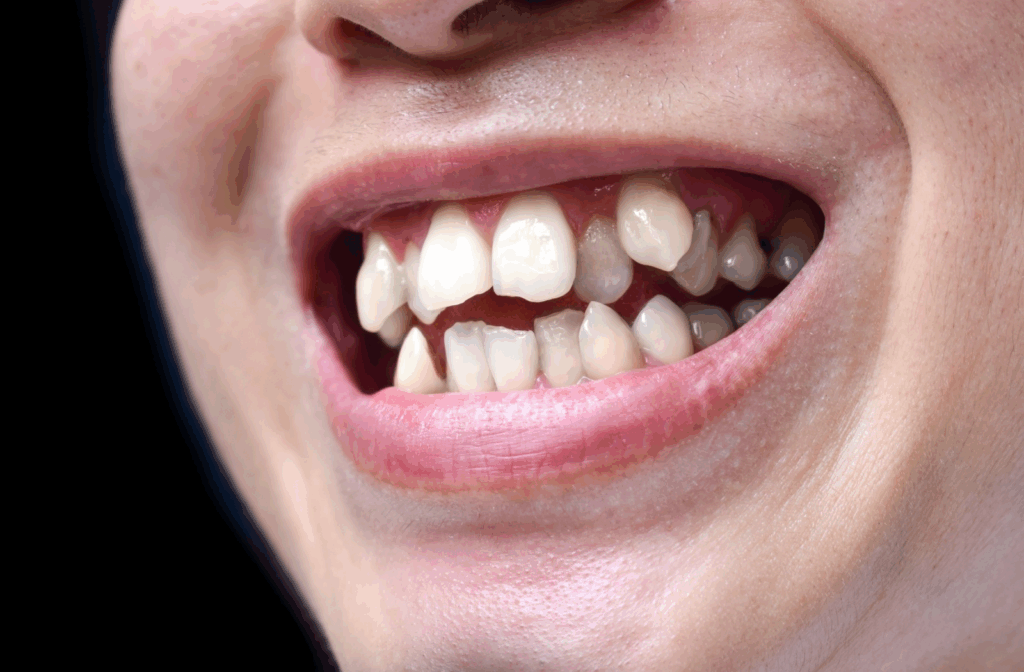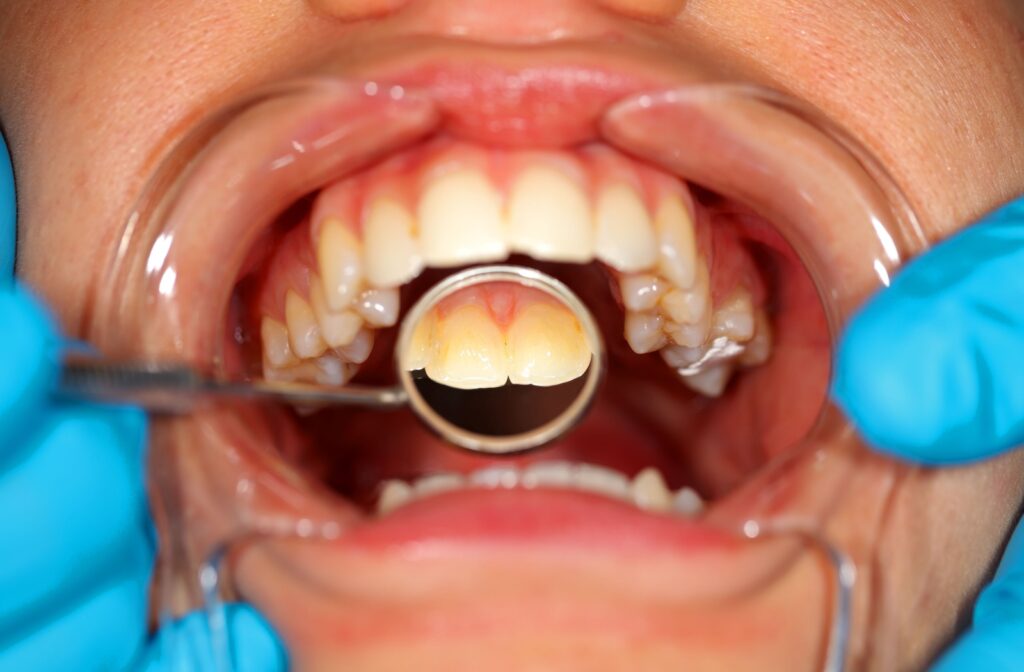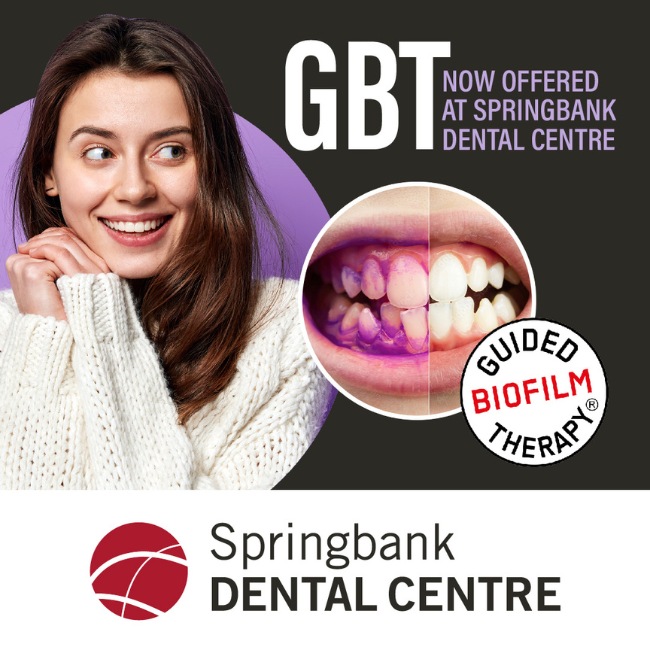When most people think about dental care, they picture brushing, flossing, and the occasional cavity. However, beneath the surface of daily hygiene habits lies a major player in oral and systemic health: biofilm.
Biofilm is a sticky layer of bacteria on your teeth that can lead to cavities, gum disease, and other oral health issues if not properly managed. With treatments like Guided Biofilm Therapy (GBT), dentists can now manage biofilm more precisely and more comfortably than ever before.
What Exactly Is Biofilm?
Biofilm is essentially plaque; it’s a soft, sticky film that develops on teeth, gums, and other surfaces in the mouth. It forms when bacteria combine with saliva, proteins, and food particles. Biofilm begins to develop just minutes after brushing and continues to build throughout the day.
Because biofilm adheres to tooth surfaces and protects bacteria within it, it can’t be fully rinsed away. Over time, it hardens into tartar, which requires professional dental tools to remove.
How Biofilm Leads to Common Dental Problems
When the bacteria in biofilm feed on sugars and starches from your diet, they produce acids as a byproduct. These acids weaken tooth enamel and harm the gums, increasing the risk of several oral health issues:
- Tooth decay. Acidic byproducts erode enamel, making teeth vulnerable to cavities.
- Gingivitis. Gum inflammation is often the earliest sign of gum disease.
- Persistent bad breath. Caused by bacterial buildup and food debris in biofilm.
Oral Bacteria Doesn’t Stay Put
Biofilm isn’t just a local issue. As gum tissues become inflamed, they begin to break down, allowing bacteria to enter the bloodstream. Once these bacteria travel through the body, they may contribute to or worsen other health concerns.
Research suggests connections between poor oral hygiene and:
- Heart disease. Inflammation and bacteria from gum disease may affect cardiovascular health.
- Diabetes. People with gum disease may have a harder time regulating blood sugar.
- Respiratory conditions. Inhaled oral bacteria may play a role in infections, particularly in older adults.
This interconnectedness between the mouth and other parts of the body highlights the need to treat oral concerns as part of a person’s overall health.
Managing Biofilm at Home
A strong dental hygiene routine at home can help limit biofilm development. Brushing twice daily and flossing once a day are basic but effective ways to break up and remove new biofilm layers before they mature.
However, biofilm tends to accumulate in places that are harder to reach, such as:
- Along the gumline
- Between crowded or rotated teeth
- Around dental restorations like crowns, implants, or bridges
Even with good habits, most people benefit from regular professional dental cleanings to manage biofilm buildup.

The Role of Guided Biofilm Therapy
Traditional cleanings often rely on scraping tools or ultrasonic instruments to remove plaque and tartar. While these methods are effective, they can sometimes be uncomfortable, especially for patients with sensitive teeth or gums.
Guided Biofilm Therapy (GBT) offers an alternative. This method uses a special disclosing agent to highlight biofilm in the mouth, making it easier to see and target. Once identified, biofilm is gently removed using a combination of warm water, air, and erythritol powder—a fine, low-abrasion polishing agent.
Because it’s minimally invasive, GBT can be more comfortable while still being thorough. This procedure also supports a deeper understanding of personal hygiene, since patients can physically see their own biofilm before it’s removed.
Why Biofilm Management Isn’t One & Done
Biofilm is always forming. Even after a dental cleaning, it starts rebuilding within hours. That’s why oral hygiene isn’t a single task, but an ongoing commitment.
Incorporating GBT into routine dental appointments allows for:
- More precise cleanings with less discomfort
- Improved monitoring of high-risk areas
- Early detection of oral health changes
Digital scanning tools like iTero can also support biofilm management by giving us a more accurate picture of your oral environment.
What to Expect From a Biofilm-Focused Clinic
Modern dental care places increasing value on prevention, comfort, and whole-body wellness. That includes choosing technology and treatment approaches that support long-term oral health, like GBT.
Clinics that offer biofilm management often offer:
- Gentle hygiene treatments
- Clear communication about at-home care
- Education on the mouth-body connection
- Updated tools and scanning technology
When oral care is customized and comprehensive, patients can feel more informed, more at ease, and better supported in their long-term wellness.
A Calgary Dental Clinic Taking Biofilm Seriously
Biofilm may be invisible at first glance, but its impact on your oral and systemic health is real. Addressing biofilm can reduce your risk of disease, improve your comfort during hygiene visits, and support your overall well-being.
At Springbank Dental Centre, our dentists in SW Calgary integrate Guided Biofilm Therapy into our hygiene services to support a modern, prevention-first approach. Our whole-health mindset and commitment to dental technology helps us care for our patients’ smiles in a compassionate and thorough way.
To learn more or schedule your next appointment, book an appointment.




